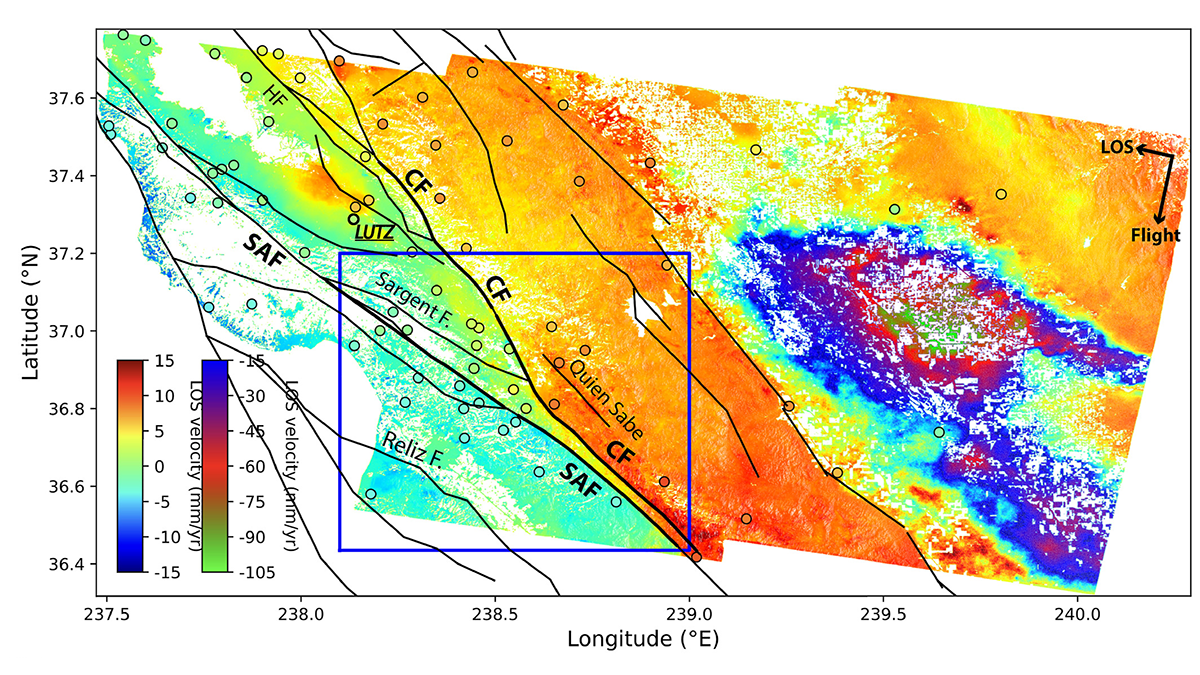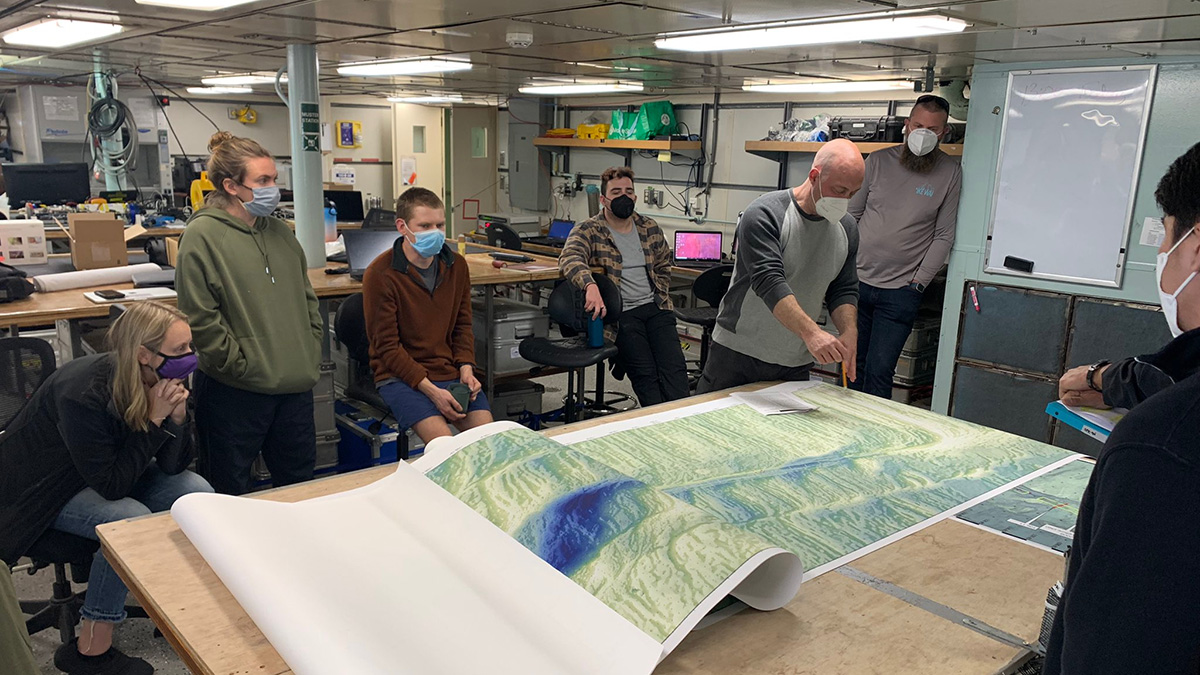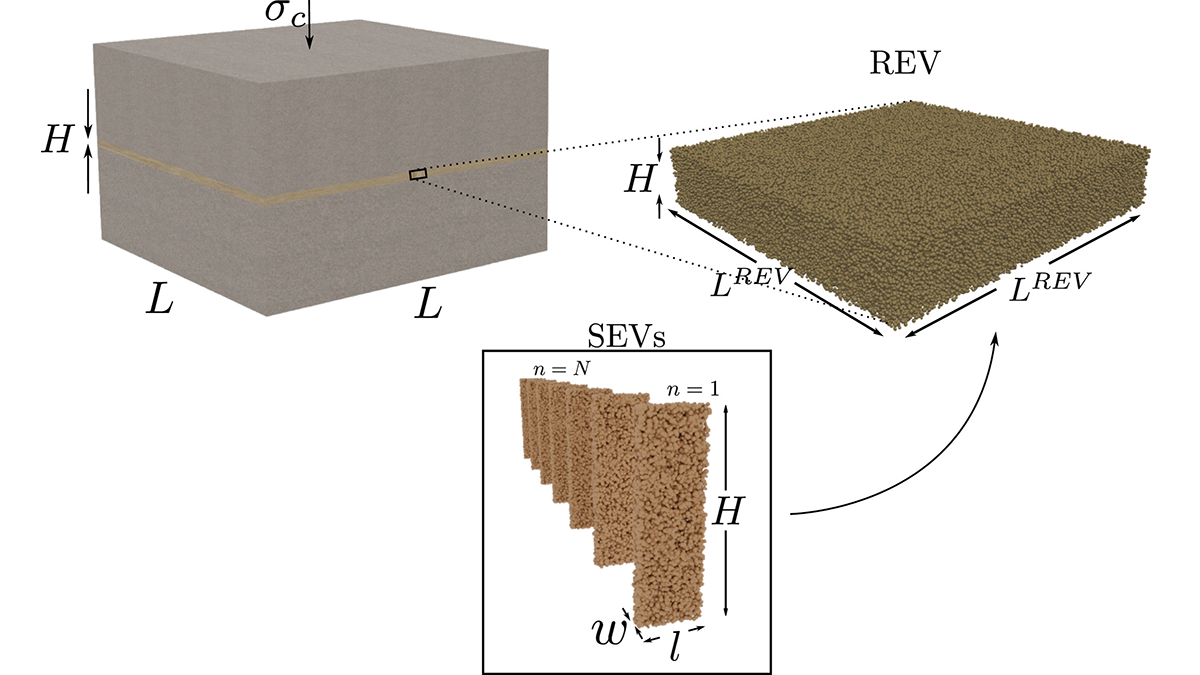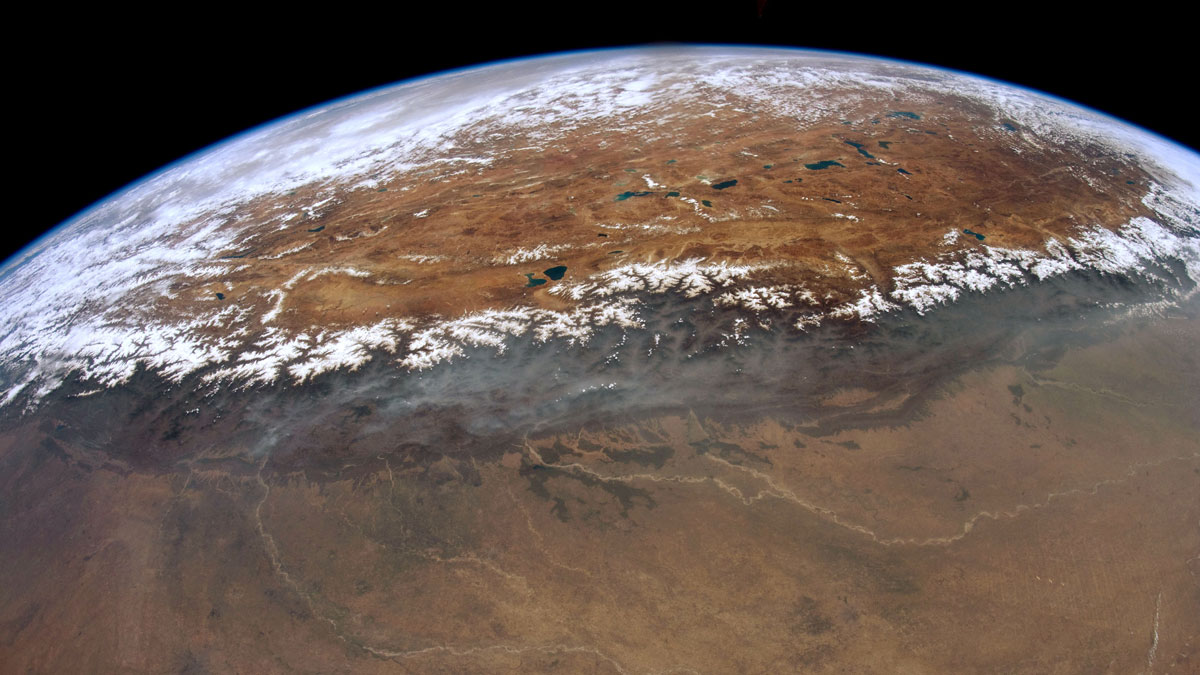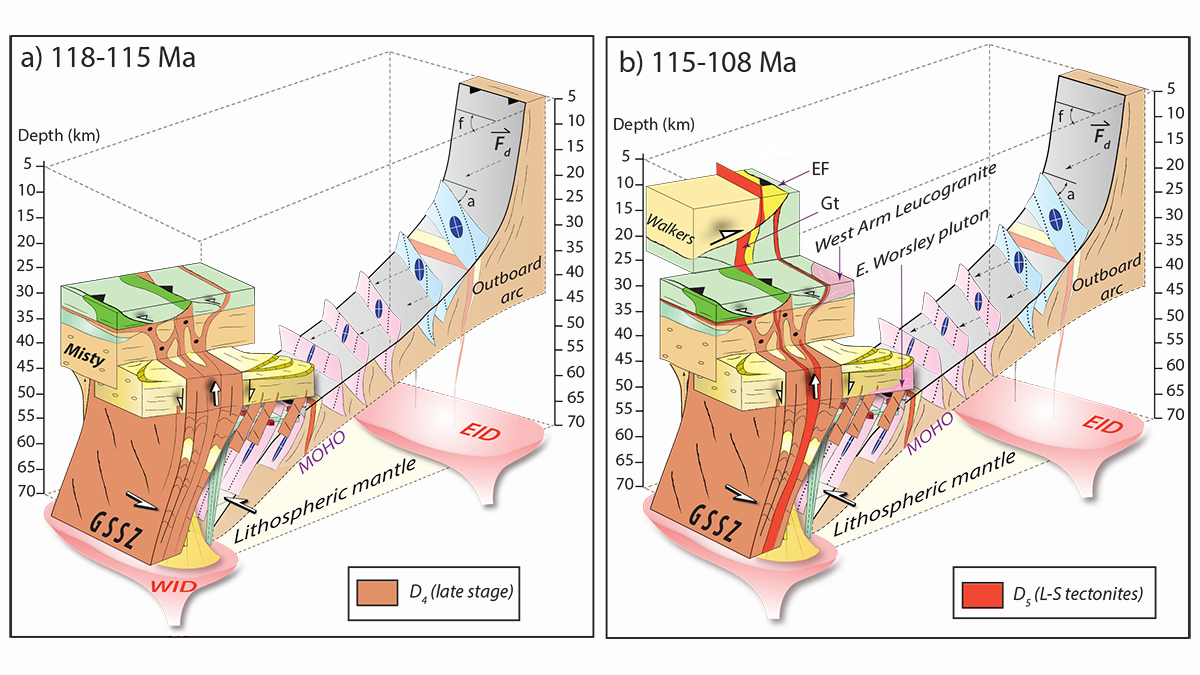A five-year time series from radar satellite imagery tracks surface slip on major faults in the San Francisco Bay Area, capturing subtle velocity variations and controlling factors.
faults
Observing a Seismic Cycle at Sea
Scientists organized a trio of expeditions to document the buildup of stress leading to a large earthquake on a seafloor fault, developing innovations for successful seagoing research in the process.
Accounting for Offbeat Earthquakes Could Improve Forecasts
A new model considers the full history of earthquakes on a fault, improving forecasts of when the next will strike.
Upscaling Slip and Friction From Grains to the Fault Core
Numerical simulations demonstrate how averaging deformations at the grain scale may unravel the macroscopic friction and unstable slip behavior of a fault core.
A New Measure of Roughness Could Advance Earthquake Geophysics
Scientists recently developed an alternative way to measure a rock’s roughness. It might help them understand the physics of faults.
New Tectonic Plate Model Could Improve Earthquake Risk Assessment
A new model of tectonic plates in New Zealand may identify areas of increased earthquake likelihood.
Coseismic Displacement of 1987 Earthquake from Aerial Images
Differencing digital surface topography models constructed from historical aerial photographs reveal the coseismic surface displacement field of the 1987 earthquake in northern New Zealand.
研究揭示尼泊尔西部喜马拉雅港湾状地形的形成
研究人员通过热运动学研究发现,沿着板块汇聚界面大型逆冲断层在中下部地壳深处的地壳物质堆叠塑造了高原的生长和区域水系的发育。
Feedbacks Between Deformation and Magmatism as Shear Zones Grow
New research reveals how the presence and absence of magmatism governs how shear zones initiate, grow, and reactivate to connect lower and upper crustal deformation.

